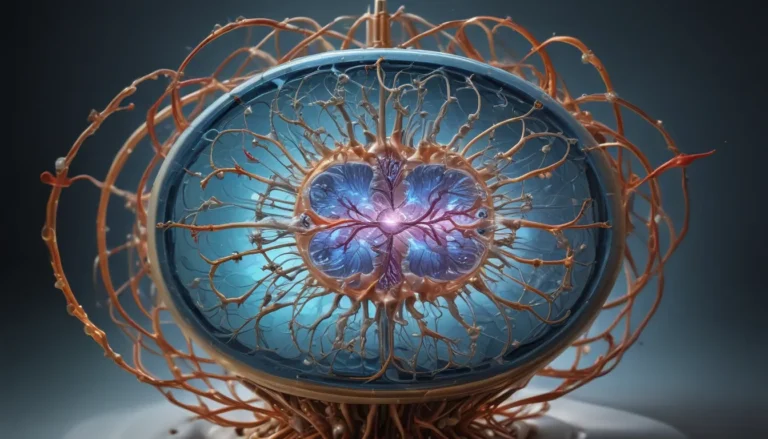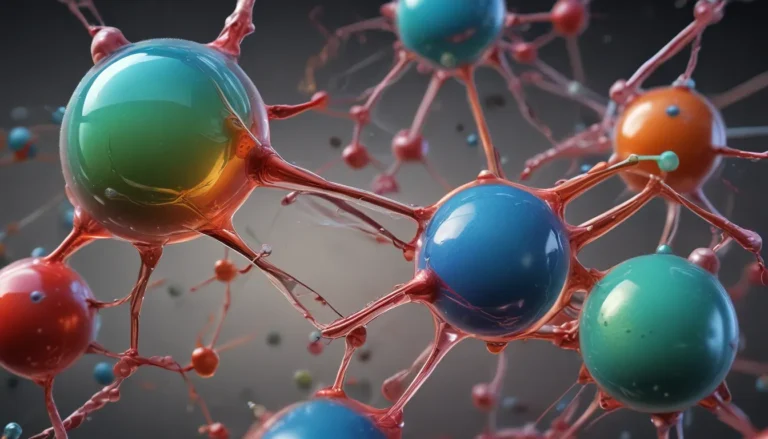A Note About Images: The images used in our articles are for illustration purposes only and may not exactly match the content. They are meant to engage readers, but the text should be relied upon for accurate information.
Have you ever wondered about the intriguing relationship between the concentration of a substance and the amount of light it absorbs? Look no further than the Beer-Lambert Law! Named after the brilliant minds of August Beer and Johann Lambert, this fundamental principle in physics illuminates the science behind light absorption. Join us as we delve into 13 surprising facts about the Beer-Lambert Law, unveiling its applications, limitations, and impact across various scientific disciplines.
## Unveiling the Origins of Beer-Lambert Law
The Beer-Lambert Law, also known as the Beer-Lambert-Bouguer Law, traces its roots back to the groundbreaking work of August Beer and Johann Heinrich Lambert in the 18th and 19th centuries. These visionary scientists independently derived the law, forever etching their names in the annals of physics. Who would have thought that a scientific principle would be associated with beer?
## Shedding Light on the Law’s Relationship with Light Absorption
At the core of the Beer-Lambert Law lies a profound understanding of how the concentration of a solute in a solution influences the amount of light it absorbs. This principle asserts that the absorbance of light is directly proportional to the concentration of the solute and the path length of light through the solution. In essence, the more solute present, the more light it absorbs, unveiling a harmonious dance between concentration and absorption.
## Applications Across Various Scientific Fields
The beauty of the Beer-Lambert Law is its versatility across a myriad of scientific domains. From chemistry to biochemistry, and even environmental science, this law serves as a cornerstone for spectrophotometry. This powerful technique allows scientists to measure the absorption of light by a substance, paving the way for groundbreaking discoveries and analytical insights.
## Unraveling the Relationship Between Absorbance and Concentration
According to the Beer-Lambert Law, the absorbance of light mirrors the concentration of the solute, showcasing a direct proportional relationship. As concentration increases, absorbance follows suit, painting a vivid picture of the interplay between these fundamental components. It’s akin to a symphony where concentration and absorbance harmonize to create a beautiful melody of scientific understanding.
## Practical Applications in Determining Unknown Concentrations
One of the tangible applications of the Beer-Lambert Law is its ability to unveil the concentration of unknown substances with precision. By measuring the absorbance of a sample and comparing it to a calibration curve, scientists can unravel the mystery shrouding the concentration of the solute in the solution. This invaluable tool empowers chemists with the ability to unlock the secrets hidden within complex mixtures.
## Embracing Light Scattering in Scientific Studies
Beyond its prowess in light absorption, the Beer-Lambert Law also factors in light scattering, enriching its applicability in diverse scientific studies. Light scattering occurs when light interacts with suspended particles or molecules in a solution, adding a layer of complexity to the absorption phenomenon. By integrating light scattering into the law, scientists gain a holistic view of light-matter interactions, bolstering their analytical capabilities.
## Harnessing the Power of Spectrophotometers
Spectrophotometers emerge as indispensable instruments in the realm of the Beer-Lambert Law, serving as beacons of light measurement. These innovative devices emit a beam of light at a specific wavelength through a sample solution, meticulously gauging the amount of light absorbed. Whether in research laboratories or industrial settings, spectrophotometers play a pivotal role in unraveling the mysteries of light absorption and concentration determination.
## Decoding the Absorption Spectrum
When a substance encounters different wavelengths of light, it unveils a distinctive absorption spectrum, shedding light on its chemical and physical properties. The Beer-Lambert Law serves as a guiding light in analyzing and interpreting the absorption spectrum of a compound, offering valuable insights into its molecular composition and characteristics. This analytical tool empowers scientists to unravel the intricate tapestry of chemical structures with precision and accuracy.
## Embracing Different Types of Absorbers
In the realm of the Beer-Lambert Law, any compound that absorbs light earns the coveted title of an absorber. From colored dyes and pigments to biological molecules like chlorophyll, a diverse array of substances fall under the umbrella of absorbers. This inclusive approach allows scientists to quantify the concentration of these absorbers in a solution, unlocking a treasure trove of analytical possibilities.
## Importance of Path Length in Light Absorption
The path length serves as a critical determinant in the absorption of light through a solution, influencing the degree of light absorption. According to the Beer-Lambert Law, a longer path length translates to increased light absorption, underscoring the significance of optimizing path length for accurate concentration determination. By fine-tuning the path length, scientists can calibrate their measurements with precision, ensuring the fidelity of their analytical findings.
## Bridging Beer-Lambert Law with Molecular Structure Insights
Delving deeper into the realm of molecular structure, the Beer-Lambert Law offers invaluable insights into understanding chemical compounds. By unraveling how a compound absorbs light, scientists gain a window into its intricate molecular architecture, including chemical bonds, electronic configuration, and spatial arrangement. This knowledge proves instrumental in diverse disciplines, from pharmaceutical research to material science, unlocking new avenues of exploration and discovery.
## Pervasive Applications in Quantitative Analysis
The Beer-Lambert Law emerges as a stalwart ally in quantitative analysis, playing a pivotal role in determining the concentration of various substances with precision. Its applications span a diverse array of industries, including pharmaceuticals, environmental monitoring, and food production, where accurate measurements and quality control are paramount. By harnessing the principles of the Beer-Lambert Law, scientists and researchers navigate the intricacies of analyte quantification with confidence and clarity.
## Navigating the Limitations of Beer-Lambert Law
While the Beer-Lambert Law shines brightly as a beacon of scientific insight, it does harbor certain limitations that necessitate careful consideration. The law operates under the assumption of a dilute solution, devoid of interactions between solute and solvent. Factors like temperature, pH, and other environmental conditions can impact its efficacy, warranting vigilance from scientists when applying the law in real-world scenarios. By acknowledging and addressing these limitations, researchers can harness the full potential of the Beer-Lambert Law while mitigating potential pitfalls.
## Conclusion
In conclusion, the Beer-Lambert Law stands as a cornerstone in the realm of physics, illuminating the intricate relationship between solute concentration and light absorption. Its far-reaching applications span diverse scientific disciplines, offering a roadmap for unraveling the mysteries of light-matter interactions. By embracing the fundamental principles of the Beer-Lambert Law, scientists and researchers pave the way for groundbreaking discoveries, analytical insights, and quality control measures in industries ranging from brewing to pharmaceuticals. Dive deep into the enigmatic world of the Beer-Lambert Law, where scientific wonders await those bold enough to explore its limitless potential.
## Frequently Asked Questions (FAQs)
-
What is the Beer-Lambert Law?
The Beer-Lambert Law, also known as Beer’s Law, elucidates the relationship between the concentration of a solution and the amount of light it absorbs. -
How is the Beer-Lambert Law derived?
The Beer-Lambert Law is derived from the absorption of light by a material, predicated on the direct proportionality between the concentration of the absorbing species and the light absorbed. -
What are the key components of the Beer-Lambert Law equation?
The key components of the Beer-Lambert Law equation include the molar absorptivity (?), the path length (l), and the concentration of the solution (c). -
What are some real-life applications of the Beer-Lambert Law?
The Beer-Lambert Law finds diverse applications, spanning the determination of analyte concentrations, monitoring of chemical reactions, analysis of mixture compositions, and assessment of substance quality in industries such as brewing and pharmaceuticals. -
Are there any limitations or assumptions associated with the Beer-Lambert Law?
Yes, the Beer-Lambert Law operates under assumptions of uniform distribution of absorbing species, absence of interactions or reactions, monochromatic incident light, and constant path length through the solution. Additionally, factors like temperature and pH can influence its efficacy, necessitating caution in real-world applications.
Prepare to be captivated by the wonders of spectroscopy as you embark on a journey through the invisible realms of light-matter interactions. Uncover the secrets hidden within molecules and expand your horizons with the boundless potential of scientific exploration.






